Coupling of PZT Thin Films with Bimetallic Strip Heat Engines for Thermal Energy Harvesting
Abstract
1. Introduction
2. Fabrication and Testing of Piezoelectric Bimetals
2.1. Fabrication Procedure of Thin PZT Films
- -
- Lead acetate (Pb(CH3CO2)2·3H2O, Alfa Aesar), zirconium n-propoxide (Zr(C3H7O)4, Alfa Aesar, 70%) and titanium n-propoxide (Ti(C3H7O)4, Adrich, 98%) used as precursor materials.
- -
- Acetic acid used as a solvent.
- -
- Ethylene glycol (C2H6O2, Fluka, 99.5%) used to prevent cracks during the crystallization of the thin films.
2.2. Properties of Piezoelectric Bimetals
2.3. Characterization of the Piezoelectric Bimetals
3. Results and Discussions
3.1. Performance Comparison of the Bimetals with a Single PZT Thin Film
3.2. Performance Comparisons of the Bimetals with Two PZT Thin Films
3.3. Performance Comparisons of Bimetals with One and Two PZT Thin Films
4. Conclusions
Author Contributions
Funding
Conflicts of Interest
References
- Puscasu, O.; Monfray, S.; Savelli, G.; Maitre, C.; Pemeant, J.P.; Coronel, P.; Domanski, K.; Grabiec, P.; Ancey, P.; Cottinet, P.J.; et al. An innovative heat harvesting technology (HEATec) for above Seebeck performance. In Proceedings of the 2012 IEEE International Electron Devices Meeting (IEDM), San Francisco, CA, USA, 10–13 December 2012; pp. 12–15. [Google Scholar]
- Arnaud, A.; Boisseau, S.; Monfray, S.; Puscasu, O.; Despesse, G.; Boughaleb, J.; Sanchez, Y.; Battegay, F.; Fourel, M.; Audran, S.; et al. Piezoelectric and electrostatic bimetal-based thermal energy harvesters. J. Phys. Conf. Ser. 2013, 476, 012062. [Google Scholar] [CrossRef]
- Boughaleb, J.; Arnaud, A.; Cottinet, P.J.; Monfray, S.; Gelenne, P.; Kermel, P.; Quenard, S.; Boeuf, F.; Guyomar, D.; Skotnicki, T. Thermal modeling and optimization of a thermally matched energy harvester. Smart Mater. Struct. 2015, 24, 085025. [Google Scholar] [CrossRef]
- Boughaleb, J.; Arnaud, A.; Cottinet, P.J.; Monfray, S.; Quenard, S.; Boeuf, F.; Guyomar, D.; Skotnicki, T. Analysis of the thermal impact of a bimetal on the dynamic behavior of a thermal energy harvester. Sens. Actuators A Phys. 2015, 236, 104–115. [Google Scholar] [CrossRef]
- Beeby, S.; White, N. Energy Harvesting for Autonomous Systems; Beeby, S., White, N., Eds.; Atech House: Norwood, MA, USA, 2010; pp. 95–100. [Google Scholar]
- Pruvost, S.; Hajjaji, A.; Lebrun, L.; Guyomar, D.; Boughaleb, Y. Domain Switching and Energy Harvesting Capabilities in Ferroelectric Materials. J. Phys. Chem. C 2010, 114, 20629–20635. [Google Scholar] [CrossRef]
- Belleville, M.; Condemine, C. Micro et Nanosystèmes Autonomes en Energie, des Applications aux Fonctions et Technologies; Belleville, M., Condemine, C., Eds.; Lavoisier and Hermes science: Cachan, France, 2012; pp. 181–212. [Google Scholar]
- Ravindran, S.K.T.; Huesgen, T.; Kroener, M.; Woias, P. A self-sustaining micro thermomechanic-pyroelectric generator. Appl. Phys. Lett. 2011, 99, 104102. [Google Scholar] [CrossRef]
- Ravindran, S.K.T.; Kroener, M.; Woias, P. A Bimetallic Micro Heat Engine for Pyroelectric Energy Conversion. Procedia Eng. 2012, 47, 33–36. [Google Scholar] [CrossRef][Green Version]
- Boisseau, S.; Despesse, G.; Monfray, S.; Puscasu, O.; Skotnicki, T. Semi-flexible bimetal-based thermal energy harvesters. Smart Mater. Struct. 2013, 22, 025021. [Google Scholar] [CrossRef]
- Skotnicki, T. Dispositifs de Conversion D’énergie Thermique en Electricité. France Patent FR2951873, 26 October 2009. [Google Scholar]
- Wittrick, W.H.; Wittrick, W.H.; Myers, D.M.; Blunden, W.R. Stability of a bimetallic disk. Q. J. Mech. Appl. Math. 1953, 6, 15–31. [Google Scholar] [CrossRef]
- Seveno, R.; Limousin, P.; Averty, D.; Chartier, J.-L.; Le Bihan, R.; Gundel, H. Preparation of multi-coating PZT thick films by sol-gel method onto stainless steel substrates. J. Eur. Ceram. Soc. 2000, 20, 2025–2028. [Google Scholar] [CrossRef]
- Seveno, R.; Averty, D. Ultra light tunable capacitor based on PZT thin film deposited onto aluminium foil. J. Sol-Gel Sci. Technol. 2013, 68, 175–179. [Google Scholar] [CrossRef]
- Dufay, T.; Guiffard, B.; Thomas, J.-C.; Seveno, R. Transverse piezoelectric coefficient measurement of flexible lead zirconate titanate thin films. J. Appl. Phys. 2015, 117, 204101. [Google Scholar] [CrossRef]
- Seveno, R.; Guiffard, B.; Dufay, T.; Thomas, J.C. Flexible PZT/Aluminium Thin Films Characterizations for Energy Harvesting at Very Low Frequencies (1 Hz). In Proceedings of the 2015 Joint IEEE International Symposium on the Applications of Ferroelectric, International Symposium on Integrated Functionalities and Piezoelectric Force Microscopy Workshop (ISAF/ISIF/PFM), Singapore, 24–27 May 2015; pp. 94–97. [Google Scholar]
- Jaffe, B.; William, R.C.; Hans, L.J. Piezoelectric Ceramics; Academic Press: London, UK, 1971. [Google Scholar]
- Noheda, B.; Cox, D.E.; Shirane, G. A Monoclinic Ferroelectric Phase In The Pb(Zr1−X TiX)O3 Solid Solution. Appl. Phys. Lett. 1999, 74, 2059. [Google Scholar] [CrossRef]
- Hwang, G.-T.; Annapureddy, V.; Han, J.H.; Joe, D.J.; Baek, C.; Park, D.Y.; Kim, D.H.; Park, J.H.; Jeong, C.K.; Park, K.-I.; et al. Self-Powered Wireless Sensor Node Enabled by an Aerosol-Deposited PZT Flexible Energy Harvester. Adv. Energy Mater. 2016, 6, 1600237. [Google Scholar] [CrossRef]
- Kang, M.G.; Sriramdas, R.; Lee, H.; Chun, J.; Maurya, D.; Hwang, G.T.; Ryu, J.; Priya, S. High Power Magnetic Field Energy Harvesting through Amplified Magneto-Mechanical Vibration. Adv. Energy Mater. 2018, 1703313. [Google Scholar] [CrossRef]
- Lee, J.W.; Cho, H.J.; Chun, J.; Kim, K.N.; Kim, S.; Ahn, C.W.; Kim, I.W.; Kim, J.; Kim, S.; Yang, C.; et al. Robust nanogenerators based on graft copolymers via control of dielectrics for remarkable output power enhancement. Sci. Adv. 2017, 3, 1602902. [Google Scholar] [CrossRef] [PubMed]
- Annapureddy, V.; Kim, M.; Palneedi, H.; Lee, H.; Choi, S.; Yoon, W.; Park, D.; Choi, J.; Hahn, B.; Ahn, C.; et al. Low-Loss Piezoelectric Single—Crystal Fibers for Enhanced Magnetic Energy Harvesting with Magnetoelectric Composite. Adv. Energy Mater. 2016, 6, 1601244. [Google Scholar] [CrossRef]
- Arnaud, A. Modélisation et Fabrication de Systèmes de Conversion Thermo-Mécanique Pour la Récupération D'énergie Thermique. Ph.D. Thesis, Université Grenoble Alpes, Grenoble, France, 2016. [Google Scholar]
- Arnaud, A.; Boughaleb, J.; Monfray, S.; Boeuf, F.; Cugat, O.; Skotnicki, T. Thermo-Mechanical Efficiency of the Bimetallic Strip Heat Engine at the Macro-Scale and Micro-Scale. J. Micromech. Microeng. 2015, 25, 104003. [Google Scholar] [CrossRef]
- Boughaleb, J.; Monfray, S.; Vine, G.; Cottinet, P.J.; Arnaud, A.; Boisseau, S.; Duret, A.B.; Quenard, S.; Puscasu, O.; Maitre, C.; et al. SPICE modelling of a coupled piezoelectric-bimetal heat engine for autonomous Wireless Sensor Nodes (WSN) power supply. J. Phys. Conf. Ser. 2014, 557, 012091. [Google Scholar] [CrossRef]

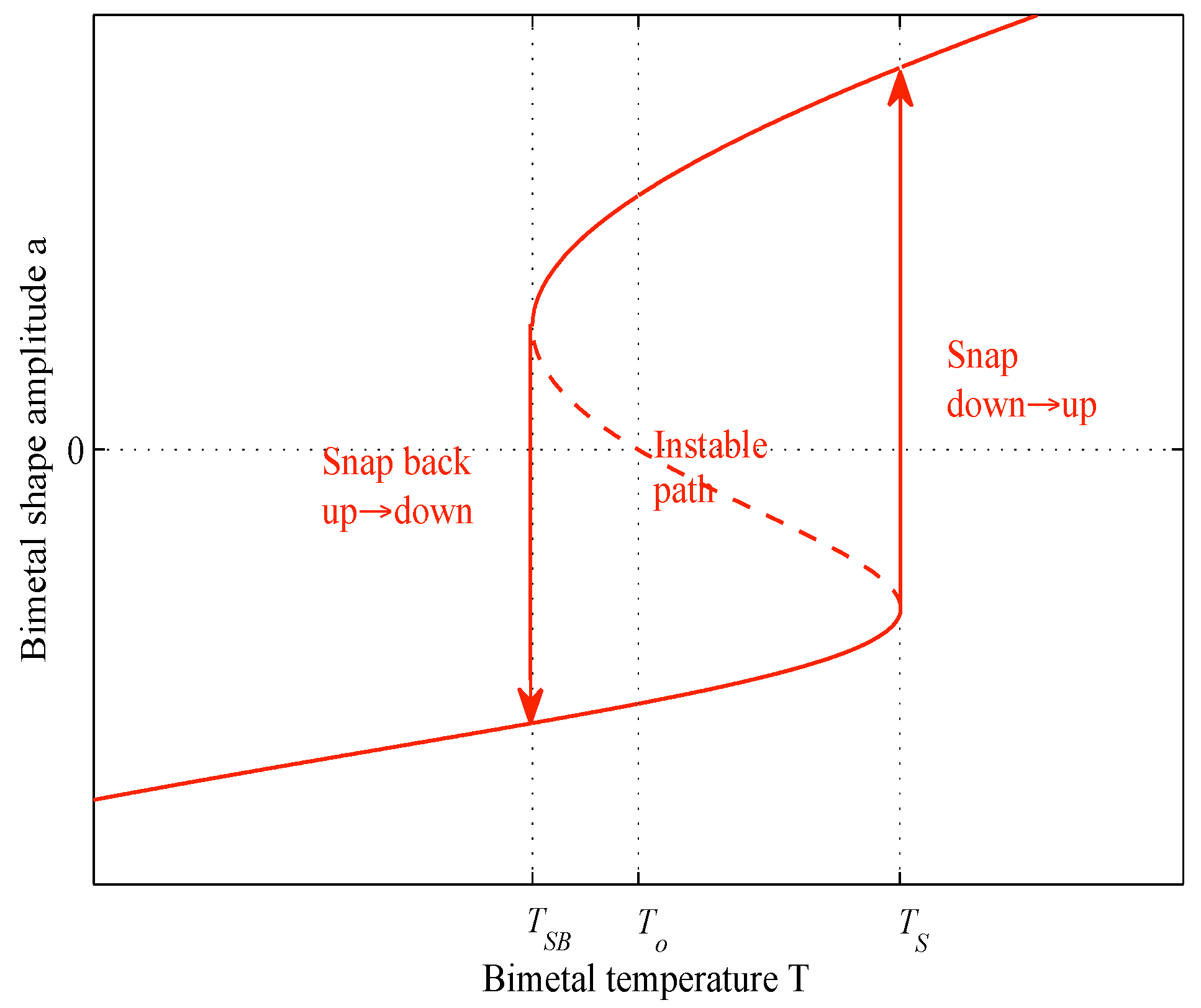
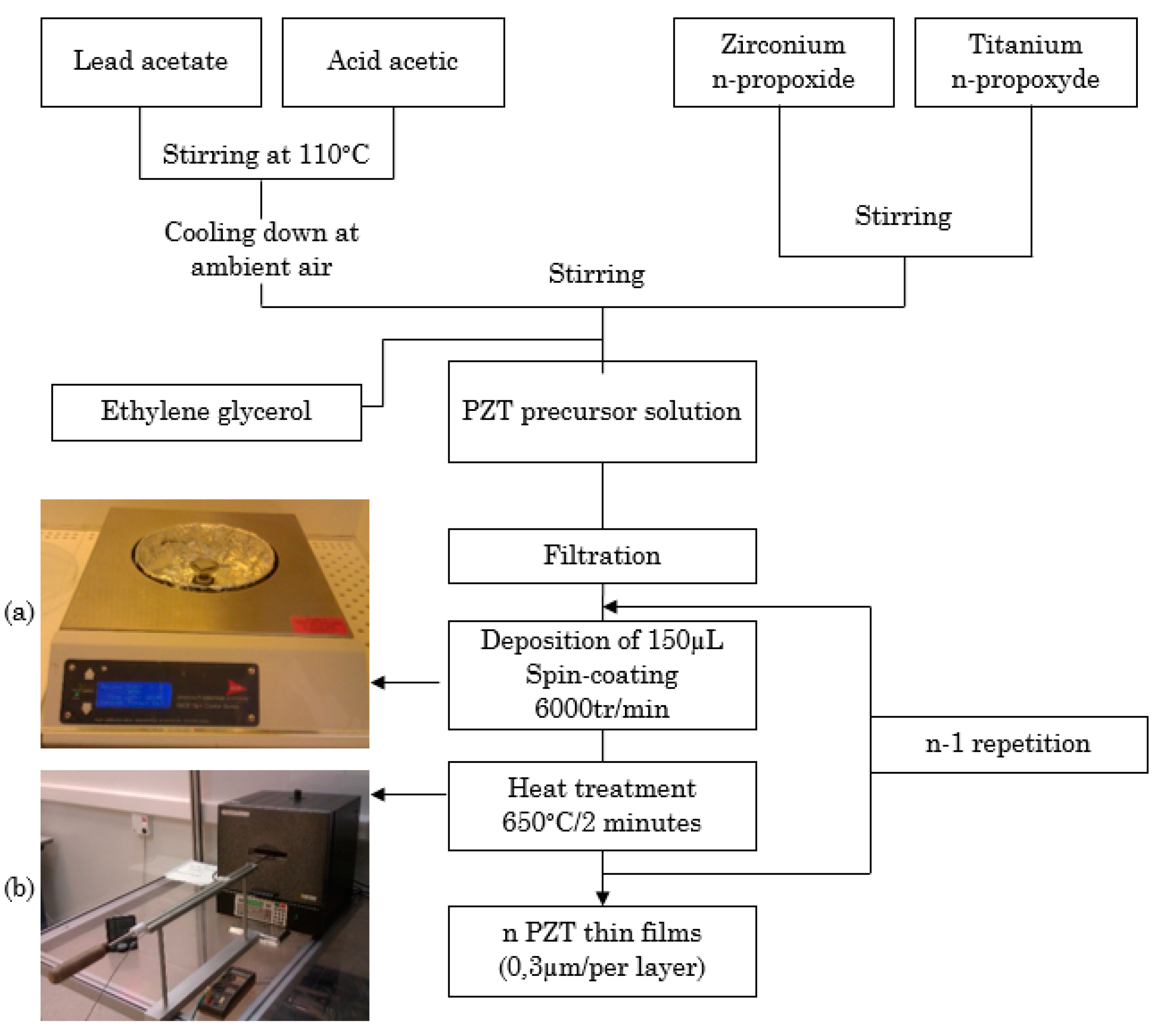
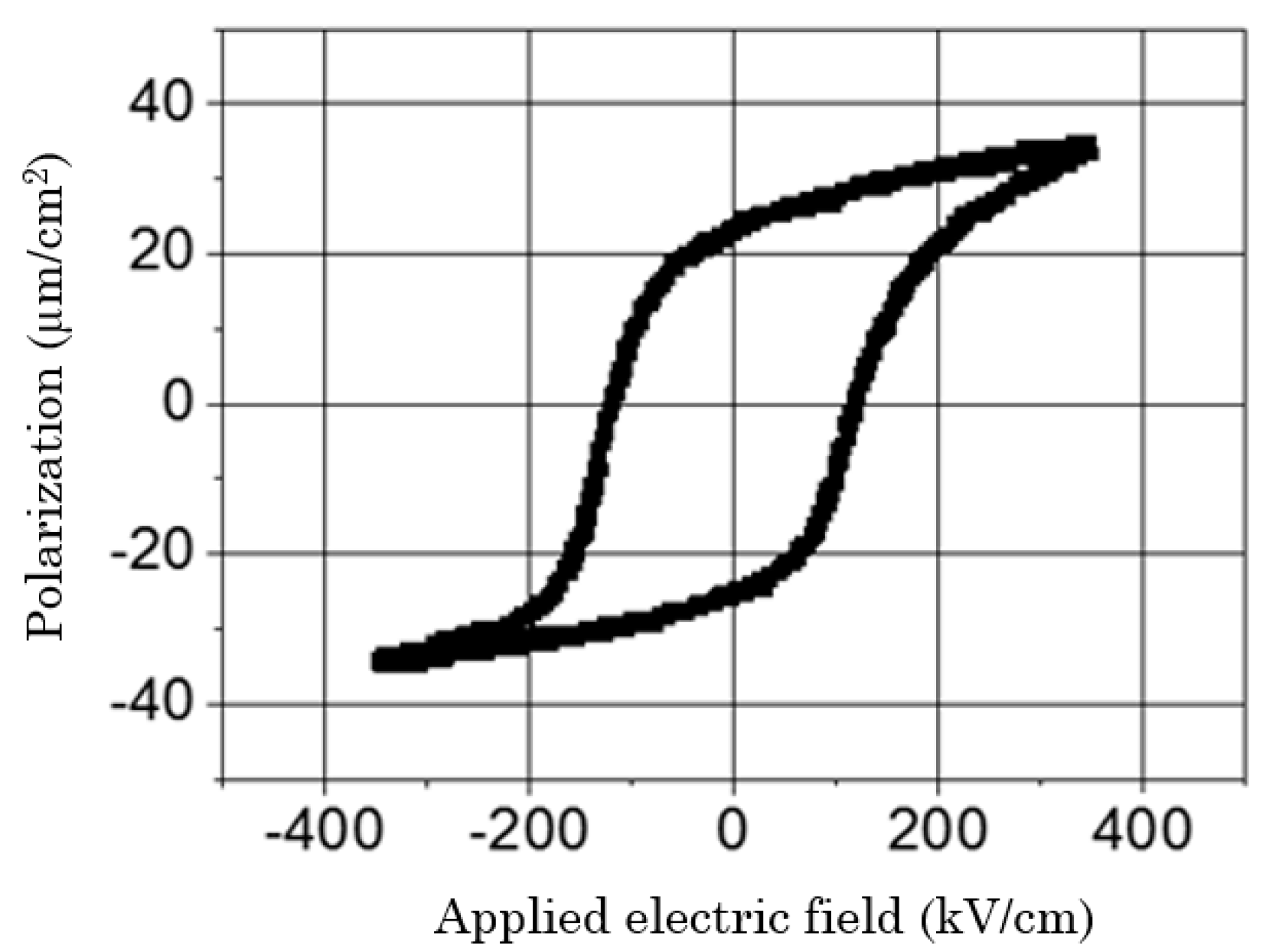



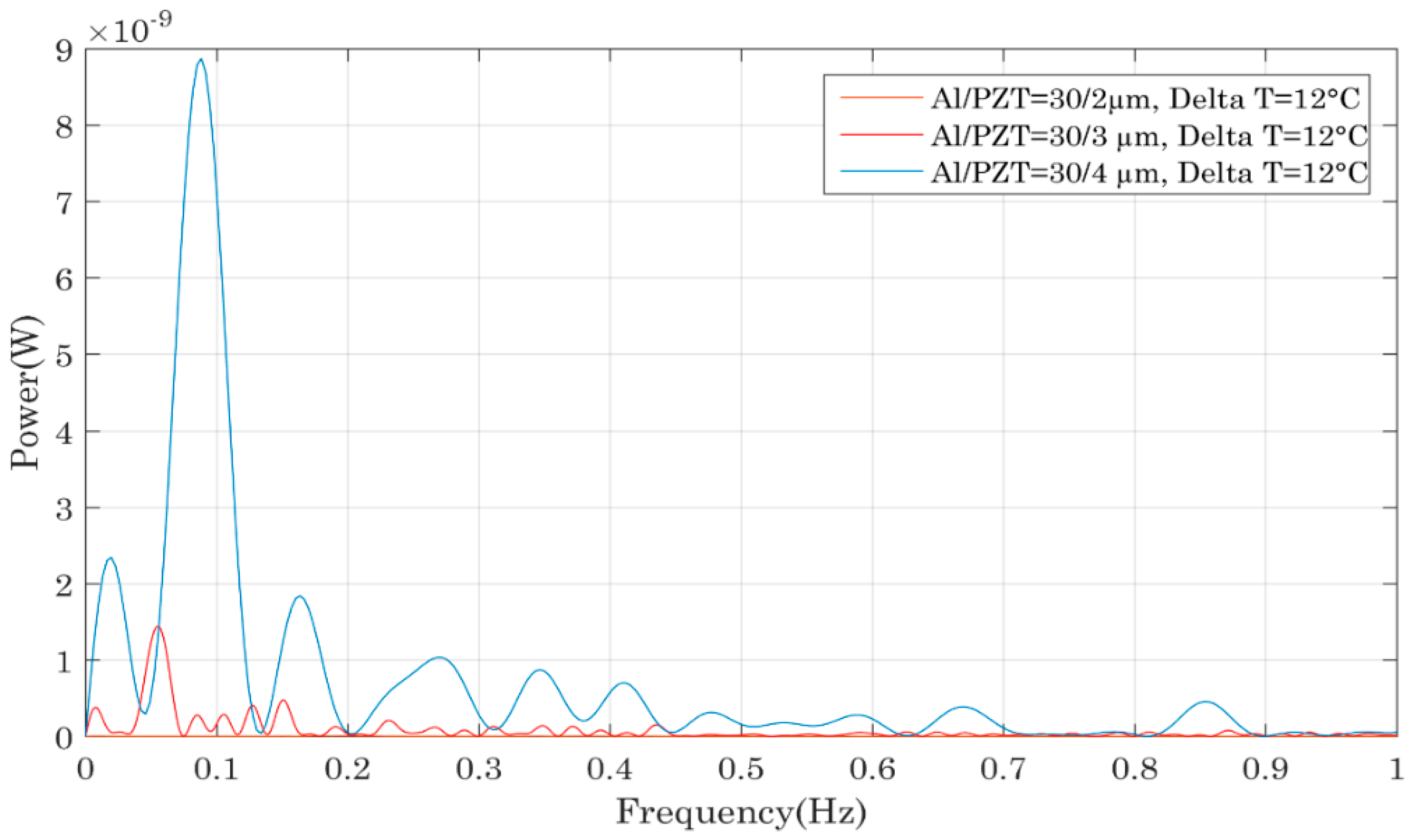
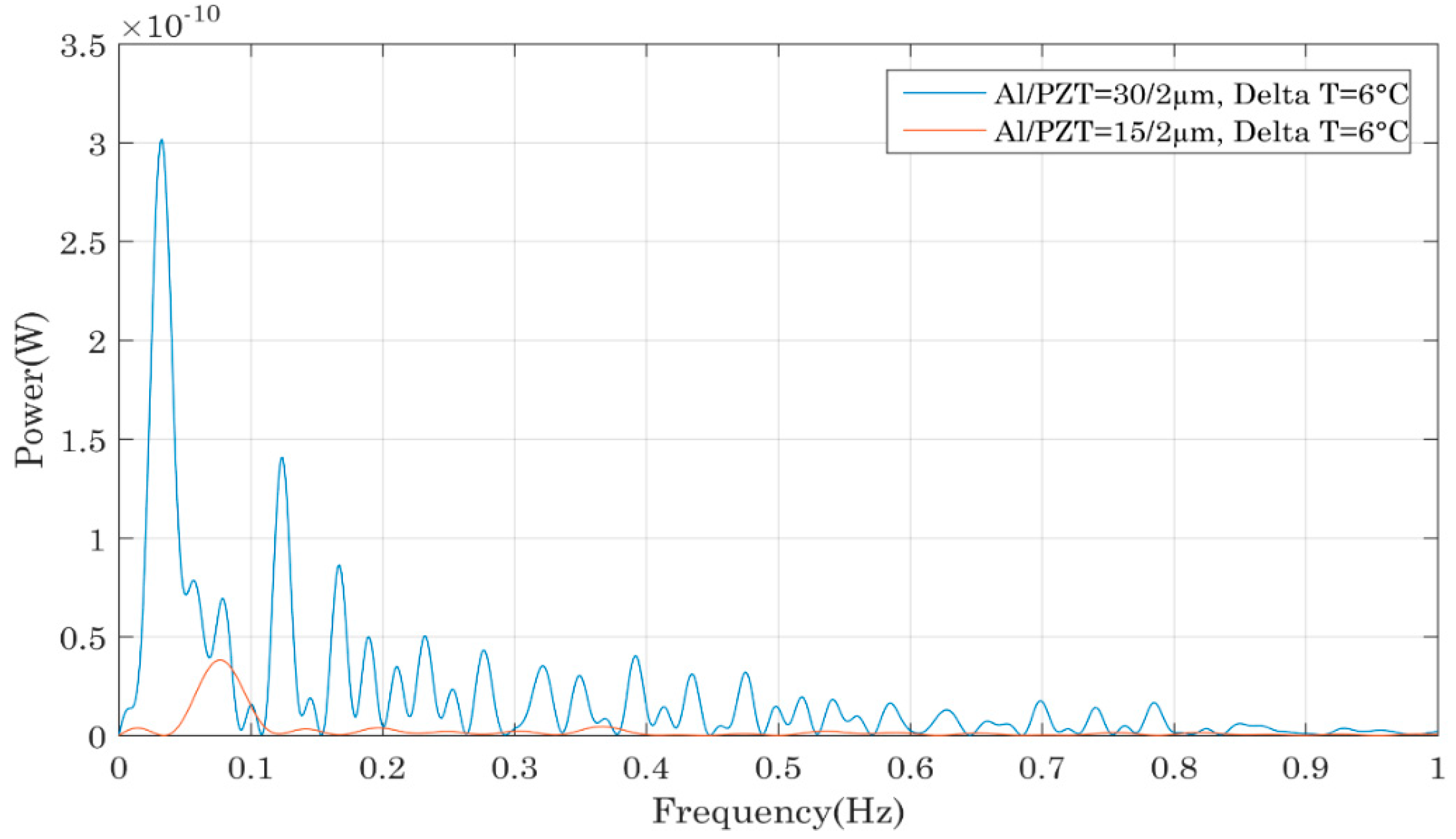
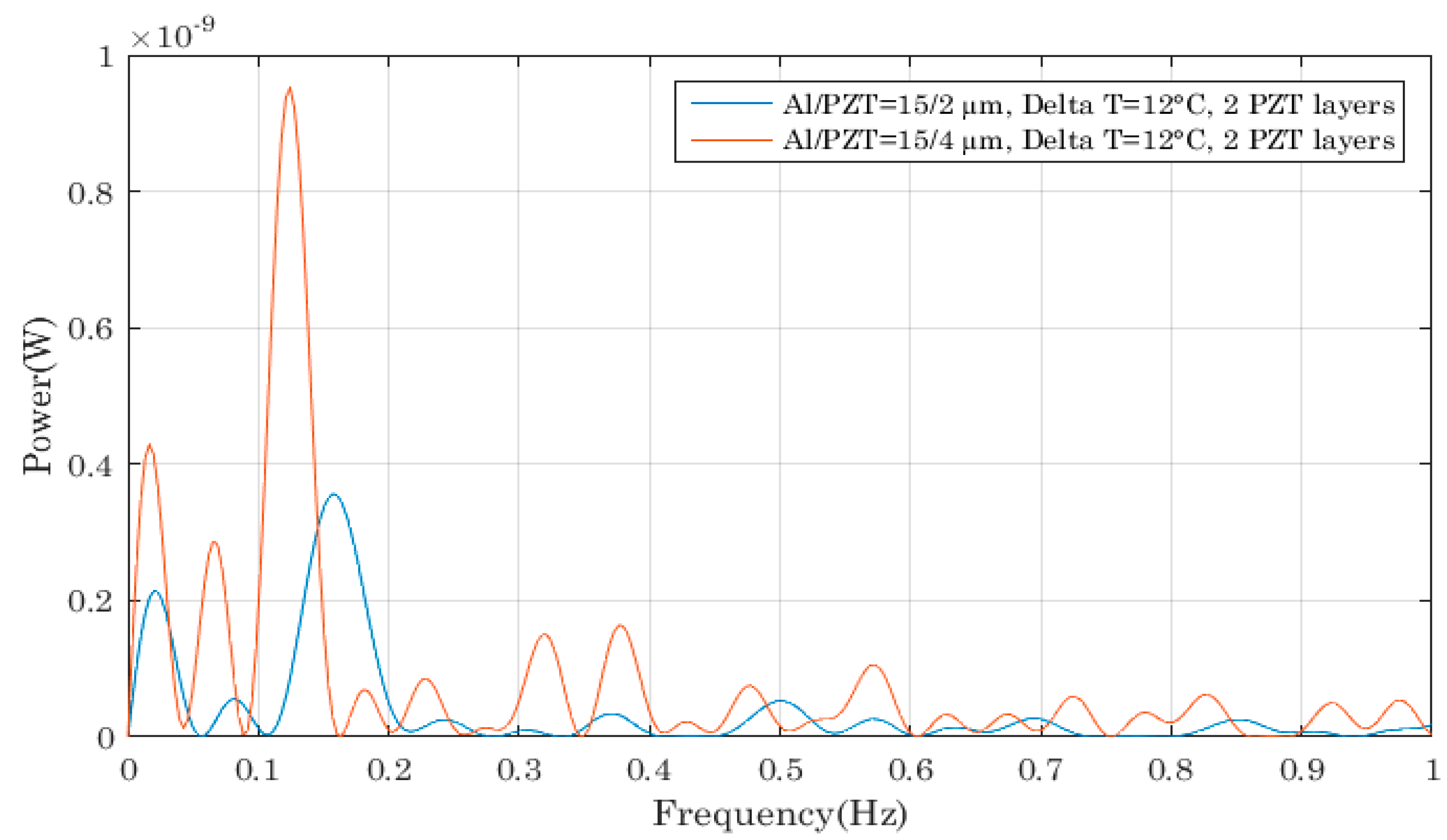
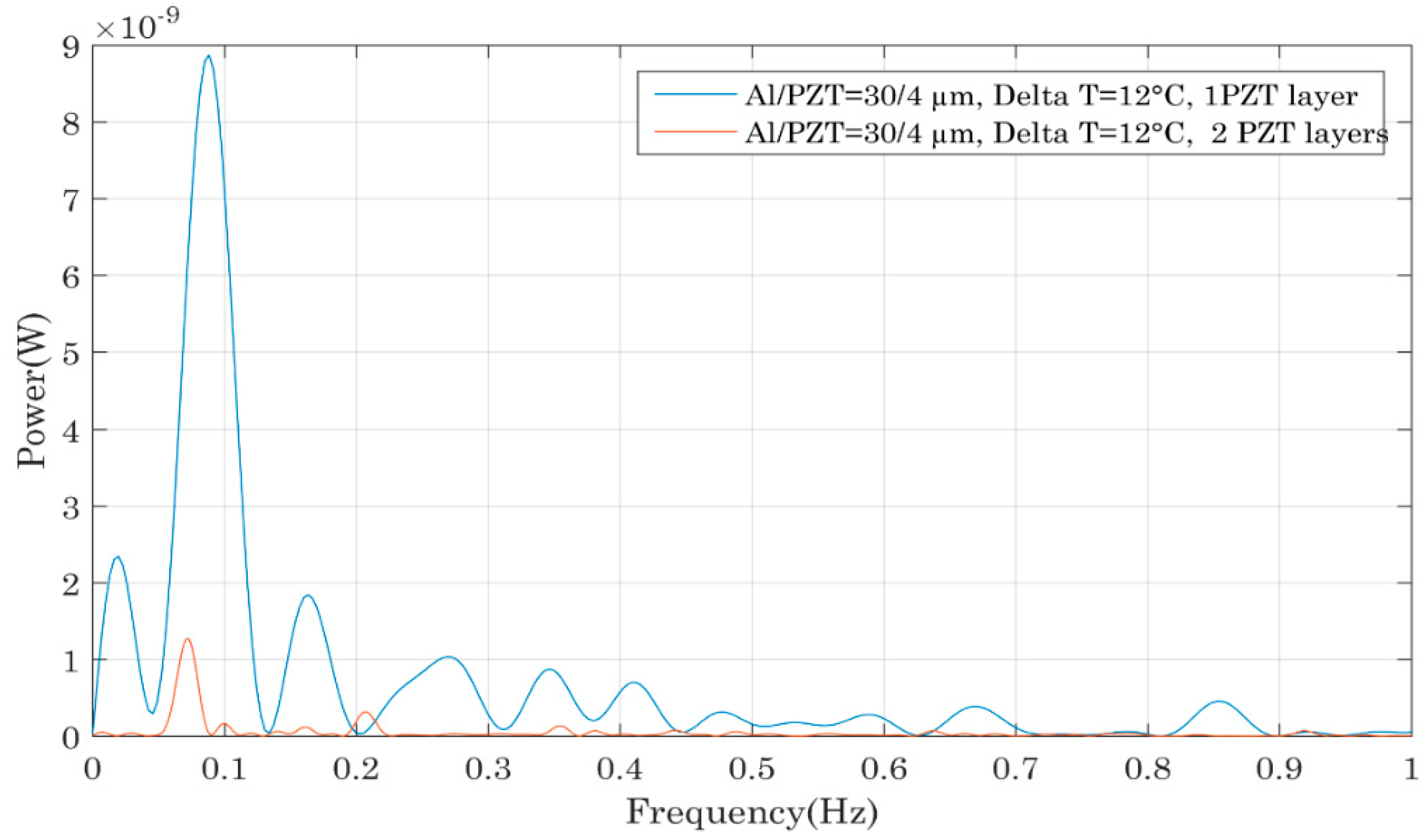
| Al/PZT | 15/2 µm | 15/3 µm | 15/4 µm | 30/2 µm | 30/3 µm | 30/4 µm | |
|---|---|---|---|---|---|---|---|
| 1 PZT layer per bimetal | Bimetal ∆T = 6 K | X | X | X | X | X | X |
| Bimetal ∆T = 12 K | X | X | X | X | X | ||
| 2 PZT layers per bimetal | Bimetal ∆T = 6 K | X | X | ||||
| Bimetal ∆T = 12 K | X | X | X | X |
© 2018 by the authors. Licensee MDPI, Basel, Switzerland. This article is an open access article distributed under the terms and conditions of the Creative Commons Attribution (CC BY) license (http://creativecommons.org/licenses/by/4.0/).
Share and Cite
Boughaleb, J.; Arnaud, A.; Guiffard, B.; Guyomar, D.; Seveno, R.; Monfray, S.; Skotnicki, T.; Cottinet, P.-J. Coupling of PZT Thin Films with Bimetallic Strip Heat Engines for Thermal Energy Harvesting. Sensors 2018, 18, 1859. https://doi.org/10.3390/s18061859
Boughaleb J, Arnaud A, Guiffard B, Guyomar D, Seveno R, Monfray S, Skotnicki T, Cottinet P-J. Coupling of PZT Thin Films with Bimetallic Strip Heat Engines for Thermal Energy Harvesting. Sensors. 2018; 18(6):1859. https://doi.org/10.3390/s18061859
Chicago/Turabian StyleBoughaleb, Jihane, Arthur Arnaud, Benoit Guiffard, Daniel Guyomar, Raynald Seveno, Stéphane Monfray, Thomas Skotnicki, and Pierre-Jean Cottinet. 2018. "Coupling of PZT Thin Films with Bimetallic Strip Heat Engines for Thermal Energy Harvesting" Sensors 18, no. 6: 1859. https://doi.org/10.3390/s18061859
APA StyleBoughaleb, J., Arnaud, A., Guiffard, B., Guyomar, D., Seveno, R., Monfray, S., Skotnicki, T., & Cottinet, P.-J. (2018). Coupling of PZT Thin Films with Bimetallic Strip Heat Engines for Thermal Energy Harvesting. Sensors, 18(6), 1859. https://doi.org/10.3390/s18061859





